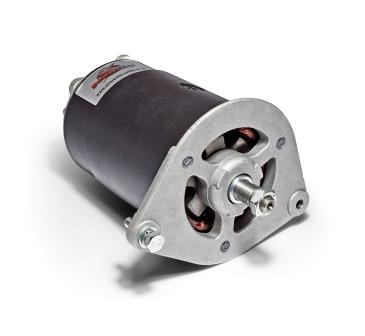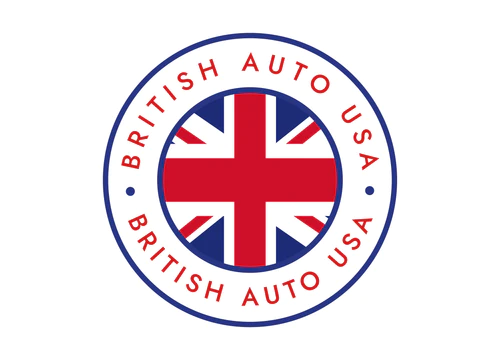NEWS
06/03/25
The wait is over, our back orders are satisfied and we STILL have stock available
The RAC511 our 6v starter motor , a direct replacement to fit the classic Porsche 356 is back in stock !!
21/02/2025
|
FAQ's
Frequently Asked Questions
Have a question? Browse the FAQS below! If you still have a question, please contact us.
 |  | |
| Starter Motors | Dynalites |
Starter Motors
A. The question we get asked the most! All Powerlite starters are designed with an in built solenoid (except RAC403 – see here). However, these can be bypassed by using a link wire (supplied where necessary). If your original starter was an inertia type (see above) then your vehicle would have a bulk head (remote) solenoid. In this instance, you have two choices when fitting a Powerlite starter:
1) If you wish to retain the bulkhead solenoid, simply use the link wire attached to the unit which bridges the motor to the solenoid. Connect the main battery feed to the battery stud, taking care not to over-tighten the nut. Your bulkhead solenoid is still operational – when energised, the link wire acts as a bridge between the motor and in built solenoid on the unit.
2) If you do not wish to use the bulkhead solenoid, remove the link wire on the Powerlite unit and bypass the bulkhead solenoid. Fit the ignition feed wire to the spade terminal or stud on the Powerlite starter.
A. We use three main styles of base unit in the Powerlite range, two of which are polarity sensitive – see the guide below for more details.
Denso style "off set" Gear Reduced - not polarity sensitive (negative and positive earth cards)
MicroStart Gear Reduced –polarity sensitive (negative earth cars only)
Slimline Gear Reduced –polarity sensitive (negative earth cars only)
A. Yes! Essentially, and this is the case with every classic car we have ever worked on, any change in the relationship between ring gear, flywheel, bell housing, engine will 100% alter the fitment of what was the original starter – no question about that.
Unfortunately, this is usually discovered after the event and the payment of several hundred / thousand pounds for expensive tuning parts and engine rebuilds! The poor old starter motor then gets the blame for “not being the right one for my set up” when the “set up” is a mixed bag of specialist and donor parts. If you know or suspect that there has been a change that will affect the operation of the starter motor, please check with us first!
A. We’d prefer you not to as it invalidates the warranty. However, in special circumstances we will give dispensation for you to do this – please contact us.
Many of the Powerlite starters where we know fitment may be an issue have been designed with multiple fixing holes in the adaptor plate which allows you to remove the adaptor plate and re-index the starter to fit in the best position.
A. There is no need to drop oil on the pinion teeth or inside the unit. This will have the adverse effect of attracting debris and increase the chance of component failure. We do offer a service for our units which involves a physical inspection, test and replacement of worn parts – the cost is calculated on a one off basis but will extend the warranty of the starter.
A. We make all Powerlite starters ourselves and we have so much confidence in the product that they all come with a two year warranty period. Certain things will invalidate a warranty – best to check here.
A. This is generally due to modifications to the ring gear or flywheel (see above). In order for us to ascertain the correct distance that the pinion needs to “travel”, we need certain measurements. Please see here for a really handy guide.
A. No straightforward answer to this one. .. Many different factors will determine current draw, including engine size and battery cable length. Best to contact us with your specific enquiry.
A. Yes, wherever there was an original version of a unit in 6 volts (Ford Model A, VW Beetle and Porsche for example) we have a high torque alternative. All of the usual checks need to be carried out (cable rating, check fuses and relays etc.) before fitting – if in doubt, ask us.
Dynalites
A. A Dynalite is a high-performance alternator encased in a housing to look like an original dynamo (generator). Powerlite invented this technology many years ago and have been at the forefront of creating many part numbers to replace Lucas, Bosch, Ducellier, Paris-Rhone and many other units. If you cannot find the fitment for your vehicle on our website, contact us, we can help. All Powerlite Dynalites carry an industry leading lifetime warranty.
A. Yes, Each Powerlite Dynalite has a shaft designed to carry the original items.
A. No problem, we have a full portfolio of fans and pulleys in stock, in both steel and aluminium. We can also make a bespoke one for you if required, using our own ‘in house’ CNC facility.
On some low revving engines, you may need to increase the pulley diameter (compared to the original) to ensure the correct operation of the Dynalite. If in doubt, contact us, we can advise and talk you through it. (Also see the below information on pulley ratio)
A. Yes, Dynalites are polarity sensitive. No problem though, the majority of our Dynalites are available in negative and positive earth specification. Just make sure that you choose the positive earth version on our website or contact us if unsure.
A. If you cannot find a notification label usually situated under the bonnet (hood), locate the battery and identify the large cable that is attached to the chassis. (For vehicles with two 6V batteries, only one will have a cable attached directly to the chassis). This is the earth (ground) cable. Follow it back to the battery terminal and check for a (+) or (-) symbol. This will indicate the earthing for your vehicle. If in doubt consult a qualified auto electrician.
A. You have a few options here…
A Dynalite doesn’t need a control box as it has an internal regulator so you can simply remove it and fit the Dynalite as you would an alternator. Alternatively, you can leave the control box in place with the wires connected to the studs or blades but not attached at the other end so the engine bay still looks original.
Another option would be to install one of our ‘dummy’ control boxes. These are equipped with a modern fuse to run with your new Dynalite, and are perfect replicas of the original control box so you have a functional yet period looking solution. This last option is favoured by the best restoration companies and manufacturers of continuation programmes to create the right aesthetic.
All our Dynalites come with a full and simple to follow wiring diagram.
A. Pulley ratio essentially compares the size of a driven pulley (in this case the Dynalite) to the size of the crankshaft pulley (also known as the driver pulley). This ratio can be found by dividing the diameter of the smaller pulley into the larger one. For optimum operation of your Dynalite, you need to achieve a pulley ratio of 2 to 1 – i.e., the Dynalite pulley needs to be roughly half the size in diameter to the crank pulley.
If in doubt, contact us!
A. Dynalites have a higher output than the dynamos they are replacing. It is therefore likely that you will need to increase the size or loading capability of the existing battery cable. Check to see what the output of the Dynalite chosen is, and then specify the cable accordingly. The distance between the battery and Dynalite needs to also be considered. Again, if in doubt consult a qualified auto electrician, we can provide them with all the info they will need.
A. Options here too. As the Dynalite has a higher output than the dynamo it is replacing, in most cases the ammeter will not function correctly (the needle will move to the maximum). An easy solution would be to by-pass or remove it altogether – however, to keep the look of the vehicle’s dash display, there are ammeters available that have an increased and suitable rating. Some of these are in a period style like the original.
Again, if in doubt, please contact us.
A. No - we don’t use your old dynamo to create a Dynalite as all the parts we use are 100% brand new and OE rated. Therefore, the Dynalite is not an “exchange sale”.
However, we do buy back old dynamos as part of our remanufacturing programme so it’s always worth contacting us. In some cases, we will reduce the cost of a Dynalite in return for an old Dynamo in decent condition.
- No products found.

